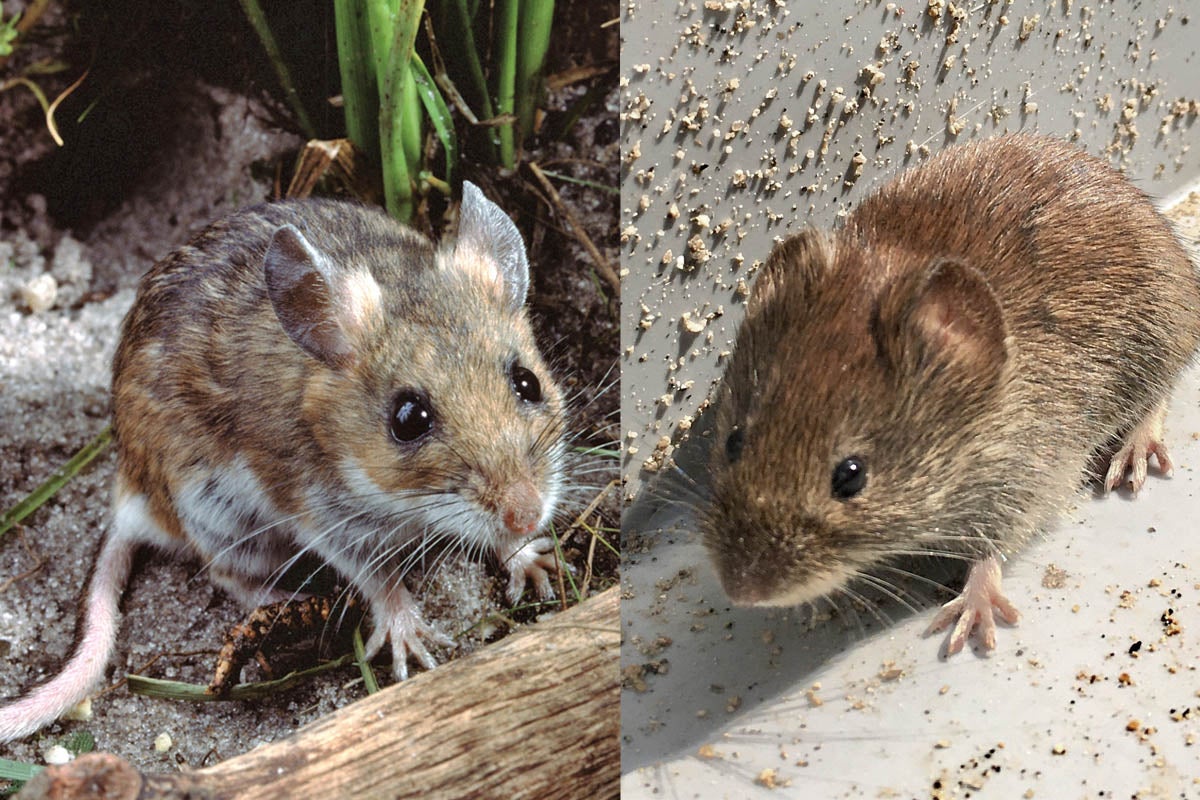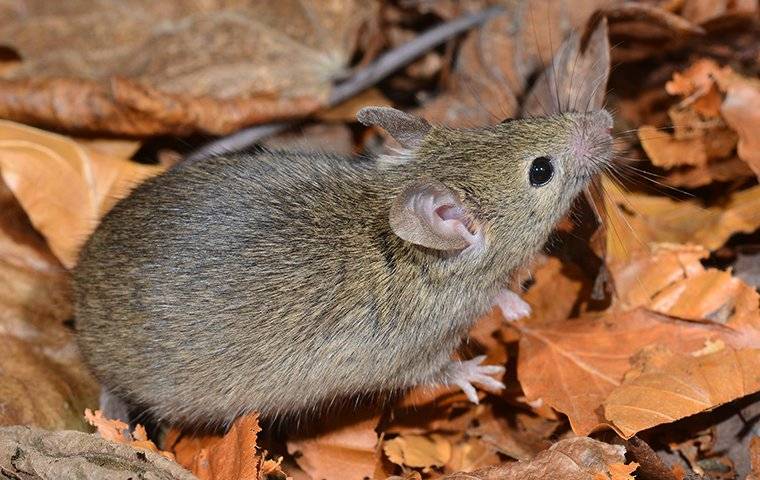Deer Mice Vs House Mice

What is the Difference between Deer Mice & House Mice?
The similarities between house and deer mouse are numerous. Both mice are approximately the same in size, and share many common physical characteristics. But these two mice are not from the same family. While house mice belong to the Murid family, deer mice come under Cricetidae. This gives them many differences that require pest technicians to use slightly different protocols for effective control. Here are a few things you should know about these two rodent species.
House Mouse (Mus musculus) While it has "house" in its name, this species of mouse is often called a field mouse because, when it isn't living with humans, Mus musculus can be found in fields and prairies. They are a creature who thrives on humans' generosity and will often seek shelter within man-made structures. Once they're inside, they love to stay.
Peromyscus keeni, the deer mouse It prefers being in nature and close to homes. You can find it in barns. Sheds. Outbuildings. But, this animal is also attracted to homes.
Deer Mice vs House Mice
House mice have a pointed nose and small, round ears. They can also be found in a variety of colors, including brown, black and grey. Deer mice are grey or tawny brown with a white underbelly and white feet. It has a short tail and fine hairs. Its white underbelly hair extends from the tail to its bottom and is the most distinctive characteristic.
House mice are about five inches long from their nose to their tail. Deer mice measure approximately 7 inches between their nose and tail.
Lymphocytic meningitis, Lymphocytic choriomeningitis, and Leptospirosis are all linked to house mice. Hantaviruses can be transmitted to deer mice. Hantavirus is a growing issue. This is why it's important to determine which type of mice are being infested. Mice use their nests to excrete feces and eliminate them when it gets too bad. Clean up can be dangerous because of this. It is important to always use a respirator.

Behavioural Differences
Habitat Unlike house mice, deer mice prefer to live outdoors in forests, grasslands, or farms. Deer mice are more likely to live in urban areas that surround their habitats than they do residential ones. Due to their small size, deer mice have easy access into homes where they can store food or build nests.
Home Damage The damage caused by both types of mice is similar. This includes chewing up furniture, mattresses, clothes, and other materials to build their nests. They also have nearly identical droppings. Although they have almost identical droppings, it's more common for deer mice to hide food supplies, which could help identify an infestation of house mice.
Disease The pests differ in one crucial way in their effect on human health: Hantavirus is a disease carried by deer mice, but not house mice, and can be fatal in some cases. You can also get salmonellosis, leptospirosis and other mouse diseases from any of the species.

What is the difference between a house mouse and a deer mouse?
There are two predominant species of deer mice, both of which can spread hantavirus. They are nearly identical in appearance, distinguished only by the territory they occupy. The Peromyscus meniculatus, the eastern deer mouse is found in all of territory east of Mississippi. It can be found only in lowland regions of the Southeast. Peromyscus sonoriensis the western mouse of deer is found in grasslands and forests of the western U.S.A. These two species used to be considered one and the same, P. maniculatus.
Deer mice measure approximately 7 inches in length from the tip to the tail of the nose, which is about 5 inches longer than the average house mouse. Deer mice also have a distinctive white belly that extends down to the tail. This is not the case with house mice, which are all brown or gray.
While deer mice prefer to be outdoors-feeding, they may also seek shelter in the winter. House mice tend to be permanent indoor dwellers.
Do Deer Mice Infest Houses?
Rural, open spaces are where the deer mouse can be found. They are rarely found inside residential properties, though they may be an issue in farms, sheds, and outbuildings. Hantavirus can also be transmitted to deer mice, which is why they pose a serious medical threat.
Hantavirus is a common infection in deer mice
Hantaviruses can only be transmitted by certain kinds of rats and mice. They are the deer mouse (white-footed), the cotton rat, the rice mouse (rat), and the rice rat in North America. The hantavirus is not present in every cotton rat, deer mouse or white-footed mouse.
Are Deer Mice Bigger Than House Mice?
The ears of deer mice are larger than those of house mice. They also have bigger eyes and a longer tail. They share similar behavior.
How Do You Identify A Deer Mouse?
Brown or grey deer mice are covered in brown fur, with white feet and underneath. The length of the tail for a deer mouse measures approximately half the size of its body. Additionally, the hind legs are shorter than the front. These pests have larger eyes and ears than house mice, which is a good way to tell the two rodents apart.













/cdn.vox-cdn.com/uploads/chorus_asset/file/21956498/AdobeStock_93481151.0.jpg)








:fill(white)

